My Digital Humanities 530 course this term (Winter 2024) at the University of Alberta was entitled "Historical Recovery of Software and Games". Over the course of 13 weeks, the students and I discussed a number of topics related to the tenuous condition of historical software records. We worked through a number of assignments that focused on the use of emulation to view and interact with older software objects.
Two of these assignments required the use of SHFT lab-affiliated projects, the Emulation as a Service Infrastructure (EaaSI) cloud-based emulation service, and the Game and Interactive Software Scholarship Toolkit (GISST). The coursework then fed into individual research projects, and we presented those projects at the inaugural History of Software and Games Mini-Conference (HiSoGaMiCon) in the Digital Scholarship Centre (DSC) at the University of Alberta.
The day was split into three sessions with a lunch poster session and topics ranged from archival recovery of historical media objects to in-depth study of historical game design systems.
Session one featured three presentations by Francine Cayanan, Adia London, and Dana Villereal. Cayanan analyzed the early tropes of JRPG design and how they were potentially informed by early CRPGs. Their work focused on Ultima, Wizardry, Final Fantasy, and Dragon Quest, and showed design parallels in random encounter and map design.
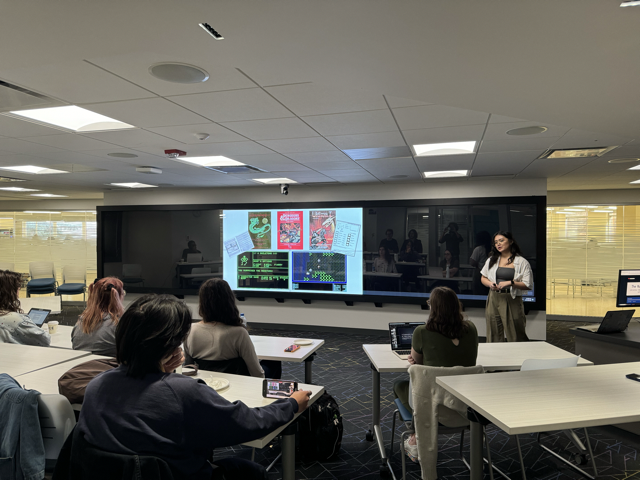
London compared film-to-game adaptations, in particular games in the Batman and Godfather franchises, and noted similarities in cut scene and visual design in a transmedia context. Particularly compelling was a comparison between the famous "horse head" scene in the Godfather as presented in the 2005 open world PS2 game.
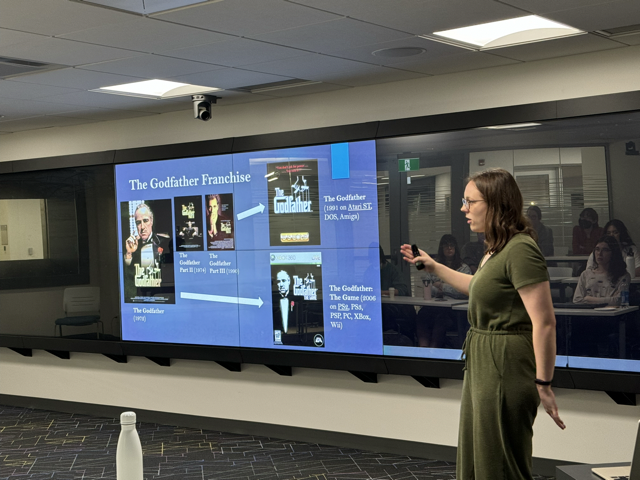
Villareal examined the presentation of bodies within the Sims games with a particular focus on the treatment of pregnancy. Sims are allowed to become pregnant but are not allowed to terminate a pregnancy. Additionally, recovering the Sims games themselves presented a challenge, with the Sims 3 being the most difficult to access even though it is more recent.
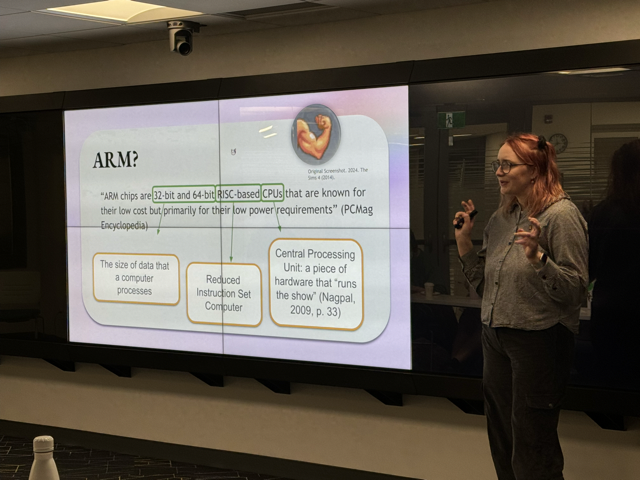
The lunch session saw a few visitors perusing the room. Each student made a research poster for the conference.
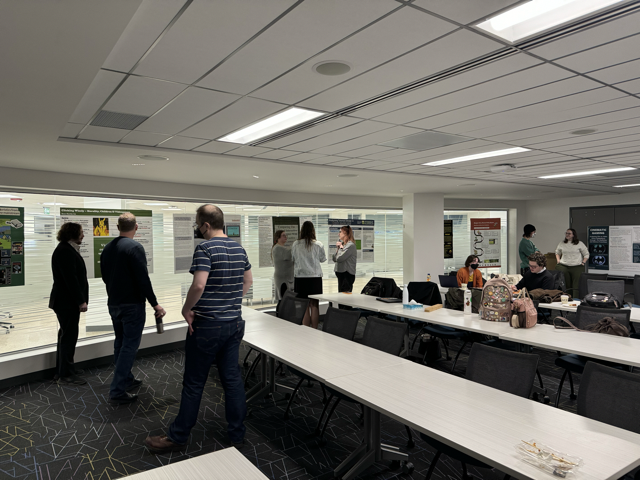
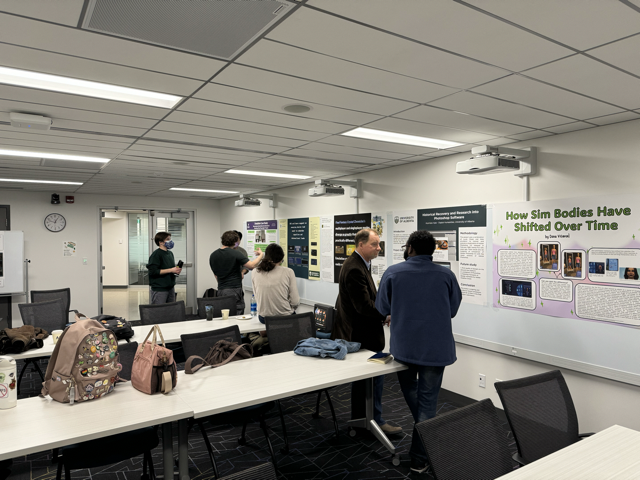
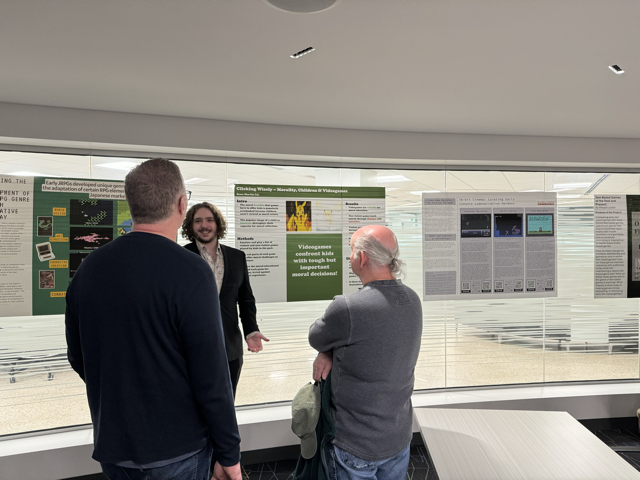
The second session feature four presenations by Michaela Morrow, Jess Tunggal, Ellie Young, and Ayo Ajao.
Morrow described a virtual "exhibition" of moments of ludonarrative harmony. Ludonarrative harmonic moments in games are when the design and narrative tightly align into a singularly coherent presentation. An example would be the character Terra in Final Fantasy VI slowly gaining new abilities as she recovers her past memories. This unlocking of skills makes consistent narrative sense as the character is finding herself again and re-learning past skills. The exhibition items were curated with GISST, and linked on Morrow's presentation poster.
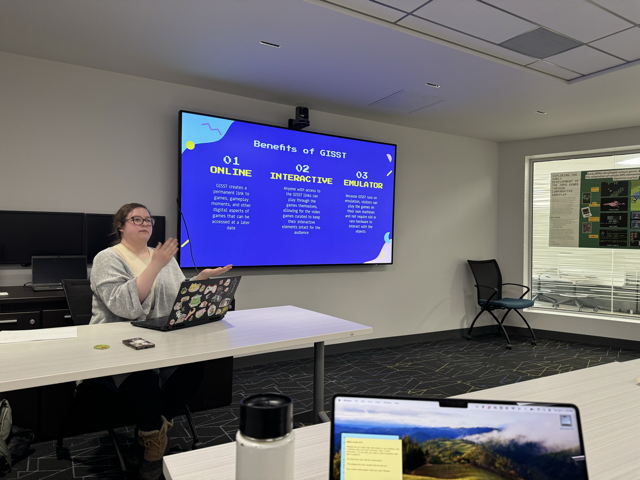
Tunggal presented work on the history of neologisms within the Super Mario Kart speed-running community. They had used GISST to cite specific SMK related strategies like the "Zoom Start" that allows a player to boost at the beginning of a race. The work also included contact with members of the SMK community to verify the community history surrounding the game.
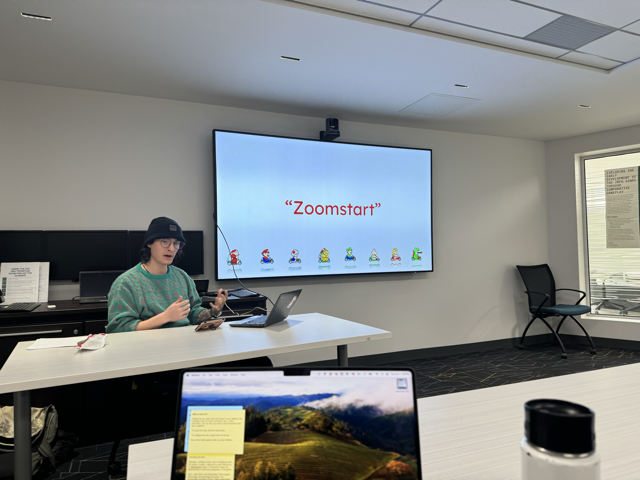
Young presented on the differences between the single player and multiplayer experiences in the Nintendo Game Cube game Final Fantasy Crystal Chronicles. The game featured a unique control scheme in which each player used Game Boy Advances as controllers hooked up to the Game Cube. Player could control in-game systems and mini-games through the GBA screen. Young also setup a physical copy of the game, complete with a period accurate CRT monitor and GBA controllers.
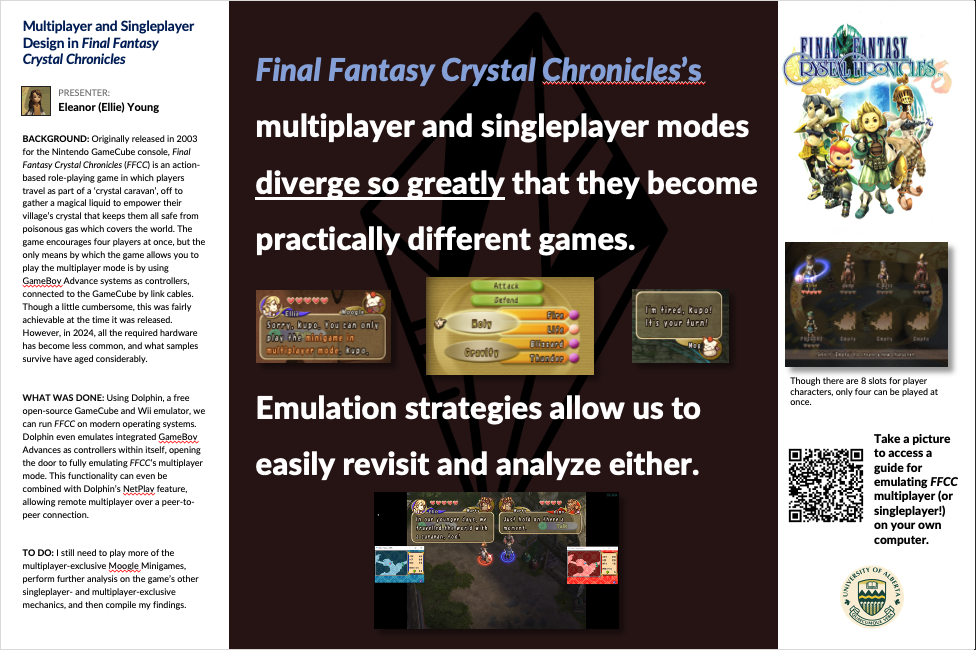
Ajao is working on exploring the interface and affordances of Adobe Photoshop 5.5 within the Windows 98 operating system. 5.5 was released in 1999 and included` the then-innovative feature of "Save for Web...", heralding in a new era of web-friendly design systems. Ajao also commented on the potential effects of Adobe's veritable monopoly on visual design programs, and how that might constrain the artistic space of computation.
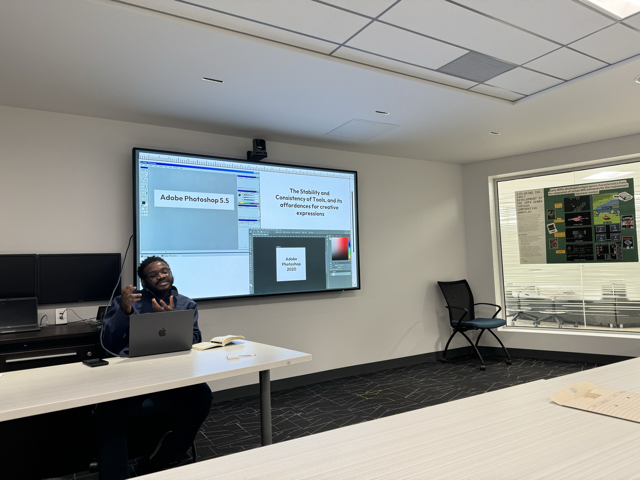
The final session included presentations from Logan Thienes, Andy Zhang, and Sean Lis. Thienes is collaborating with the University of Alberta archives to recover data donated by Edmonton's Workshop West Theatre. The organization donated a collection of over 100 physical media disks, and Thienes has been working on recovering data from them over the course of the semester. He has already revealed old logo design, past contracts, and even some correspondence, commenting that many organization may not realize what, exactly, they are donating. Most of this work makes use of local emulation to render the historical files.
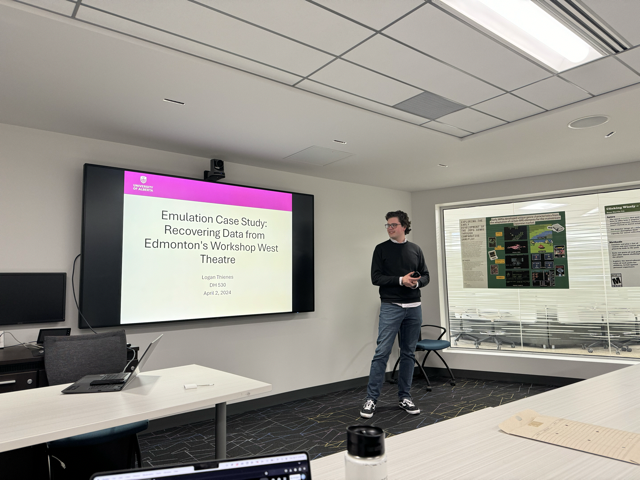
Zhang focused on the history of DOS "Outliner" programs, systems designed to help hierarchically organize thoughts and notes during the 1980s and early 1990s. The presentation included a number of advertisements from the period, and revealed some interesting philosophical trends emerging from this segment of the tech community of the time.
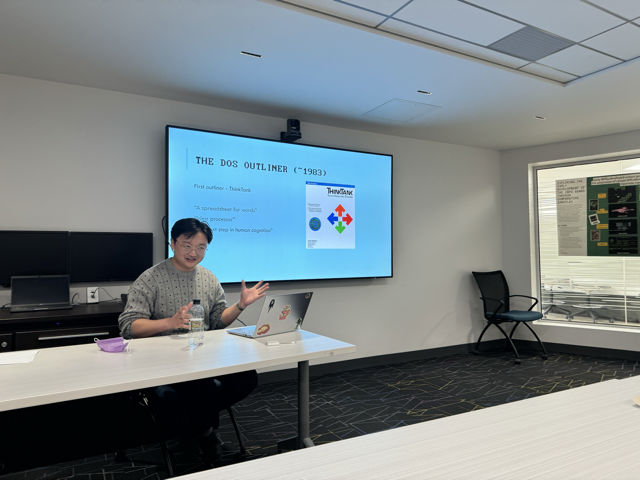
Finally, Lis's work highlights the effect and conditions of moral choices within the design of historical games. They argue that games that present more mature themes (and the ability to commity violent acts) are actually more compelling moral communicators than non-violent children's software. The main point is that situations where morals are presented didactically, without any real player choice, are less effective and convincing than those games that present players with the ability to commit immoral acts with lasting consequences.
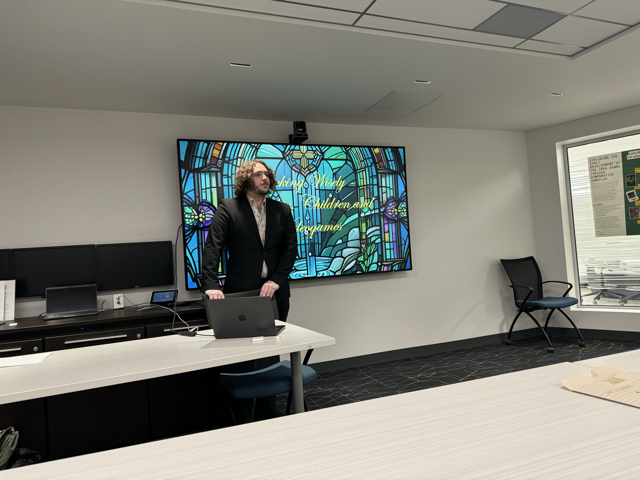
Overall, the event was a great showcase for the potential of emulation in motivating historical studies. Many presenters provided specific overviews of the technical constraints affecting their recovery efforts, as well as rigorous citations of the versions of software and games they studied. A consistent theme was one of wrestling the historical systems to allow for interaction and introspection. The work with our GISST system was also used to compelling effect within some of the presentations pointing to a bright future for emulation-based tools and techniques.
A mighty thanks to all the presenters! We are eagerly anticipating further publications from this selection of studies.